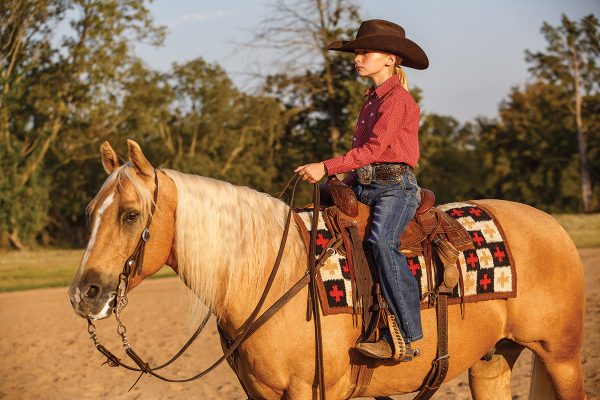
Being able to ride your horse on a loose rein can be helpful in a variety of situations, like competing in certain western classes or while trail riding or gathering cattle. But before you loosen up and lose contact with the bit, you want to make sure both you and your horse are ready to communicate with your other cues.
Why Loose Reins?
If you’re constantly hanging on the mouth of your horse with your reins, your body will start showing signs of compensation, and your horse will actually become less controllable, because it takes more strength from you to communicate what you want.
Riding with loose reins makes the riding experience better for both you and your horse. You’re building a better relationship by trusting him to behave and perform on a loose rein.
Before You Go Loose
Your horse needs basic training and must have a solid grasp of commands to go forward, left and right, and to back up. He needs to be calm and quiet. Don’t try this on a green horse if you’re inexperienced.
As the rider, you need to have a good base—an independent seat and slow hands. You also need to make sure your saddle fits you and your stirrups are adjusted to the right length.
Reins You Can Drape
Western reins fit into three categories: closed reins, split reins and romal reins. Each have their place for best results.
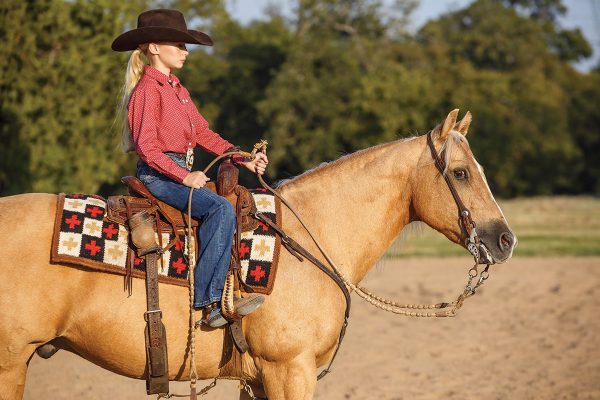
Closed reins tend to be used with one hand so your free hand can hold the horn or hold a rope. They’re popular in roping and barrel racing. They’re a safe choice to use for not dropping a rein, but if they are too short, they limit the maneuvers you can perform with your horse. They are illegal in some competitions, such as western pleasure, so check the rules before entering the show pen.
Split reins are held with one finger between the reins, or no finger between reins with thumb on top. They’re traditionally held in your left hand, but it is also acceptable to use the right hand. They are the most versatile type of reins.
Romal reins are held in your left hand in a fist, like you’re holding an ice cream cone, and the tail is kept in the right hand with about 16 inches of rein between your hands. Depending on the event, like reining or cow horse, your right arm can be bent or held on your thigh (horsemanship).
Start on the Ground
Practice getting comfortable and confident handling your reins—off the horse.
Sit in a chair holding your reins with your bridle lying on the ground in front of you, and work on holding the reins as if you were riding, adjusting them separately and together, going from two hands to one and back again—without dropping your reins.
This builds muscle memory, and it’s a great activity for cold, wet days when you can’t ride.
The Right Cues
Always aim to control your horse with the lightest cue first, followed by an additional aid, then reinforcement, if necessary, to get the desired maneuver.
For example, while guiding your horse to the left at a walk or jog, first move your rein hand slightly to the left. If you don’t get the desired response in change of direction, add the calf of your right leg. If you still don’t get the desired response, take up your reins to make contact with the bit, and cue more firmly with your calf, heel or even spur (if you are riding in spurs under the guidance of an instructor), and repeat the process, if necessary. Once you get your desired response, quit on a good note for the horse.
By going with the lightest cue first, you allow your horse to make a mistake and learn from it before turning to the heavier cue.
Safety Considerations
Don’t ride on such a loose rein that your horse could step into the drape, or if something unexpected came up, you wouldn’t be able to quickly regain contact with your horse to control him.
If you’re riding in split reins and tend to drop a rein, practice stopping: Sit back, say “whoa” and pull on the one rein to turn into a tight circle. Dismount quickly and quietly, picking up both reins, then remount. Never reach over to try to pick up a dropped rein from your horse’s back. It’s very dangerous to do this if your horse accidentally steps on the dangling rein.
Try this Drill
This fun drill can help you practice steering on a loose rein.
1. Set out three pairs of cones in a triangle, with each set of two placed a horse’s length apart.
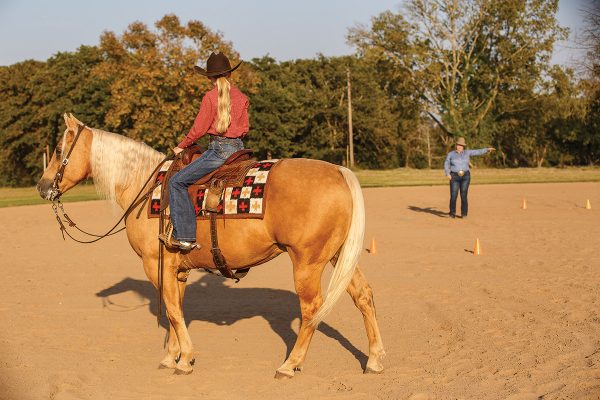
2. Guide your horse toward one set of cones at a walk, and once your horse is on the correct path, drop your rein hand to your horse’s neck to allow for loose reins.
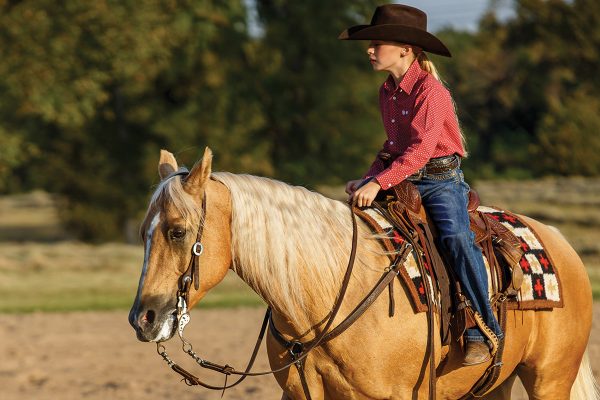
3. Using your body and leg cues, try to guide your horse toward another set of cones. If your horse doesn’t respond to those cues alone, follow by picking up your reins and guiding your horse back to the desired path.
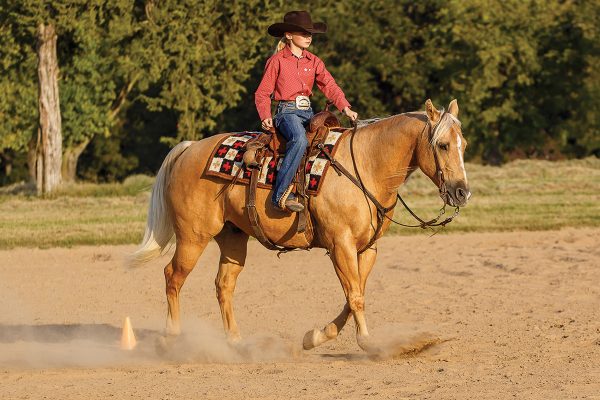
4. Once your horse can do this at a walk, try it at a jog and lope.
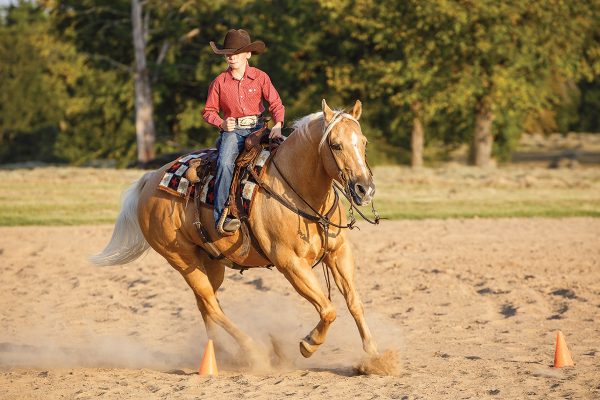
5. For an additional challenge, knot your reins and loop around the saddle horn, then place your hands behind your back as you guide your horse through the pattern.
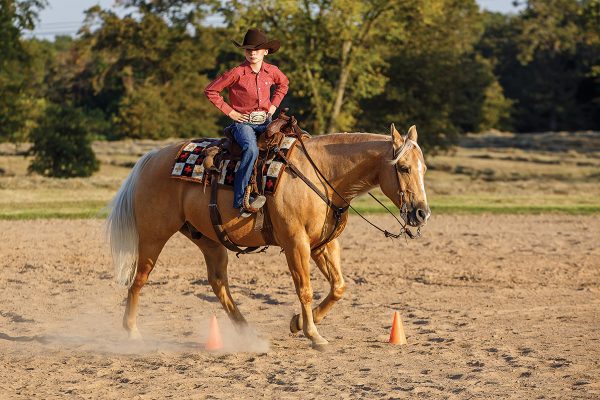
Avoid Confusion
Don’t send mixed signals to your horse, such as balancing on his mouth with your reins and holding him back to keep him slow. Time the release of your rein contact during your riding for when your horse is doing his job correctly.
Make sure your cues mean the same thing to your horse in every situation. For example, if you correct your horse’s guiding cues in the arena, do the same when you’re on the trail.
Make sure to separate collection cues from guide cues to avoid confusing your horse. For instance, don’t ask your horse to turn, and give at the chin, and rock back on his hocks at the same time. Instead, ask your horse to collect and balance on a straight line with contact, then keep your hand low and neck rein as you guide for turns. Most of the time, if you work to get your horse to turn with light rein guidance, he will balance on his own.
Special thanks to Elle Gerfen for demonstrating these exercises at Luse Horses in Lake Kiowa, Texas.
This article about how to ride on a loose rein appeared in the Summer 2021 issue of Young Rider magazine. Click here to subscribe!


